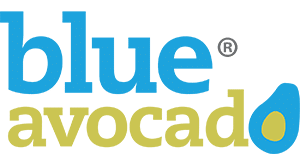Should Board Members Be Required to Give?
Are board giving requirements a best practice or a bad idea? Blue Avocado reports on trends and explore the real questions.

Board giving is a more complicated matter than just having a requirement.
Few debates can rile up board members more than the question, “Should our board have a giving requirement?” Many of us know from firsthand experience that discussions addressing this question are often characterized by frustration, bewilderment, sarcasm, absolute certainty, or even anger.
Unfortunately, there’s no definitive answer to the question, because having a requirement for giving does work for some boards, but not having a requirement works just as well for others. There are substantive, valid arguments to be made on both sides of the debate:
Proponents of required giving believe it signals board member commitment, at the same time giving board members a sense of investment and shareholder stake in the organization.
Institutions such as universities, operas, museums, and others whose board members are recruited mostly for fundraising are where one sees required giving most frequently, at levels ranging from $500 to $2,500, $10,000 and so forth. And in the stratosphere of board giving, one major university expects (requires) trustees to make personal gifts of $20 million each during the period of their trusteeships.
Reflecting frustration dealing with her board, an executive recently exclaimed in anger and disgust, “My board won’t even agree to have a minimum donation requirement!”
The intensity of her emotional reaction reveals that it isn’t just the few thousand dollars (presumably) lost that is bothering her; to this executive, it’s a symbol of the failure of board members to show their personal support for her and the organization.
Trends.
In a 2007 national survey, BoardSource found that only 27% of nonprofit boards have minimum giving requirements. Another 28% require board members to donate, but do not specify any amount. But nearly half — 45% — do not have any requirement at all.
For boards that do have a minimum giving requirement, the average requirement is $150/year. With U.S. boards averaging 16 members, these donations would result in $2,400 per year — hardly an amount to be felt in most organizations.
Perhaps far more intriguing is what the fundraising company Marts & Lundy found: “There are no apparent differences in board member unrestricted annual fund giving between those institutions with explicit contribution requirements, and those without.”
In other words, the percentage of board members who make financial contributions was roughly the same whether or not the board had a specified giving requirement.
The type of board seems to be more relevant to board giving than whether or not there is a giving requirement as shown in the chart to the right.
Both the BoardSource and the Marts & Lundy studies are weighted more towards larger institutions than community-based nonprofits usually are. But it’s telling that even in these institutions, board giving is a more complicated matter than just having a requirement.
Different economic backgrounds and abilities to give.
Those who argue against minimum giving requirements say that the policy limits board participation to people of economic means, disqualifying from board leadership voices and perspectives of lower-income community members.
There may be other board members who have lost jobs or savings and can no longer give at the level to which they committed three years ago. Another case against specified donation amounts is that board members tend to give at the minimum stated level, whereas if there were no specified amount, some would give more.
(Some boards are told that funders will ask whether 100% of board members make donations as one criterion for funding. Rather than use the possibility of this rare occurrence as a club to beat board members into giving, in the unlikely event that you do get this question, answer cheerfully, “We’re working on it!” and then do so.)
Even $150 may be more than some board members can afford to give. Boards that value having members with different income levels and backgrounds may be uncomfortable with requiring any set amount. As a result, language to convey giving expectations may include such statements as:
- “Board members are expected to make an annual financial contribution that would be considered generous for them.”
- “Board members will give annually at a level that is meaningful to them.”
- “Board members will make giving to this organization a priority (or one of their top three donation recipients).”
For some board members, a meaningful personal donation might be $10, while for another on the same board, a gift of $5,000 would be a reasonable expectation. The Marts & Lundy survey suggests that when organizations adopt these kinds of general guidelines, they do so to avoid having to “enforce” rules.
Some boards that want to require board fundraising employ the “Give, Get or Get Off” policy: requiring each board member, for example, to give $10,000, obtain $10,000 in donations, or leave the board. This distasteful slogan (sometimes shortened to “Give or Get”), again works for some boards, but not for many others. And sometimes a kind of reverse pride sets in where people are self-righteous about NOT knowing anyone who could make a major gift.
Let’s get real.
There are boards where fundraising and personal giving is explicitly ruled out and there are boards that do almost nothing besides raise money.
It would be nice if there were no requirements, and every board member gladly made an annual financial donation at a meaningful level. It would be nice if we didn’t argue over board giving requirements as a substitute for discussing deeper dissatisfaction with a board member’s performance.
In terms of overall financial viability, board donations and board-solicited donations are seldom make-or-break-it amounts for nonprofit organizations.
What’s more important is that the organization have a strategy for financial viability that includes the right mix of donations, grants, earned income, government contracts, and so forth.
Board members often help organizations financially in high-impact ways by developing income in areas other than their own individual direct donations.
Prospective board members should be told whatever expectations exist, and given a chance to bow out of the process if they aren’t comfortable with them.
And all things considered, we think it’s a good idea to have a formal expectation that every board member will help the organization bolster revenue. Here are some sample statements that clarify a variety of types of board member support:
- “Each year before December 1, I will make, without being reminded, a personal financial contribution to our organization at a level that is meaningful to me,” or
- ” I will (choose one or more) make calls during the annual phone-a-thon introduce the director to corporate contributions officers, identify RFPs for government contracts, chair the Annual Luncheon Committee, contact at least four elected officials to encourage funding of our organization.”
Even on boards where there is a giving requirement, many board chairs and executives have difficulty getting everyone to make the final leap from the debt implied of a contribution requirement to the actual writing of the check. In our next Board Cafe column we’ll discuss some tips on painless pulling of teeth.
See also:
You might also like:
- The Million-Dollar Question: What Could Your Nonprofit Do if Money Weren’t an Issue?
- Four Ways to Remove a Board Member
- Is There An Inequality Tipping Point for Nonprofits?
- The Ultimate Guide to Nonprofit Fundraising in 2025
- Insider Newsletters: An Easy Way to Keep Your Board in the Loop and Engaged
You made it to the end! Please share this article!
Let’s help other nonprofit leaders succeed! Consider sharing this article with your friends and colleagues via email or social media.
About the Author
Jan is a former editor of Blue Avocado, former executive director of CompassPoint Nonprofit Services, and has sat in on dozens of budget discussions as a board member of several nonprofits. With Jeanne Bell and Steve Zimmerman, she co-authored Nonprofit Sustainability: Making Strategic Decisions for Financial Viability, which looks at nonprofit business models.
Articles on Blue Avocado do not provide legal representation or legal advice and should not be used as a substitute for advice or legal counsel. Blue Avocado provides space for the nonprofit sector to express new ideas. The opinions and views expressed in this article are solely those of the authors. They do not purport to reflect or imply the opinions or views of Blue Avocado, its publisher, or affiliated organizations. Blue Avocado, its publisher, and affiliated organizations are not liable for website visitors’ use of the content on Blue Avocado nor for visitors’ decisions about using the Blue Avocado website.








It can get worse, I know of one non-profit whose by-laws specifically restrict all fundraising responsibilities to the Executive Director. Once the long-term ED approaches retirement, it’s unknown as to how the organization will fare since the board has no fundraising experience.
Regards,
Bill Huddleston, The CFC Coach
Author of soon to be released:
A Hidden Treasure for Your Non-Profit,
How to tap into the CFC, America’s Largest Workplace Giving Campaign
Email: BillHuddleston@verizon.net
1-703-560-1825
www.cfcfundraising.com
Blog: www.cfctreasures.wordpress.com
The role of a Board member is 75% Fund Raising, 25% Governance. Simple rule of thumb, Give, Get or Get Off. Too many, these days, do not understand the primary responsibility of a Board member and their responsibilities to the organization they represent. Fund Raising is not always an easy task, therefore, it is much easier to pass it off to professional staff. DAP Management Consultant 760-3403408
Money isn’t just money; it’s a convenient proxy for engagement and involvement, since it’s more easily measured than gifts of time and effort. I agree that it’s important for boards to agree on what they expect of themselves as a group and to inform new board members of those expectations. It’s also important to avoid both shaming and bragging, since money is also a proxy for self-respect, pride, and community standing. But let’s not forget about the value that nonprofits derive from the non-monetary gifts that board members can and should provide. Being an advocate to the larger community, being a source of skeptical feedback to the executive director and one’s fellow board members, and simply showing up and paying attention are all of great value to the organization. Money matters, absolutely. But it’s not all that matters.
Betsy Buchalter Adler
Adler & Colvin
www.adlercolvin.com
Different matter: How soon can a "new board member" be expected to vote on important policy/managment matters that come before the board of directors.
New board member of M-L cooperative
If you have been elected to the board and your bylaws state that all directors are voting members, then you can be expected to vote on day 1.
We’ve established our bylaws such that a board member must be on the board for one year before they can "vote", period. We operate mostly on consensus, so their voice is valued and we haven’t ever had to actually go to a vote, but we have this both as a legal fallback and as somethign that sends a clear message about how long we think it takes for a board member to really grow to understand the culture and philosophy of the org.
Money is a risky proxy for the engagement of the directors. Directors have significant and time-consuming fiduciary duties under state and federal law, even if you subscribe to the policy-making model of John Carver and the like. Funders ought to want to know how engaged the directors actually are, not only how much they give. Who educates the funders?
Michael A. de Freitas
Buffalo NY
What percentage of boards actually engage the John Carver model? What is the typical fundraising expectation for the organization that does not depend on its board members to raise any money? How long have those organizations been able to exist in that manner?
I hear about the success of the John Carver model but have yet to encounter one organization that has flourished under its premises. Moreover, I fear that those same organizations, unless they are foundations, will perish once existing ED’s/Presidents/CEO’s leave. I can speak to no other experience and am in wonderment.
Kayte Connell CCT
West Chester, PA
I hear a lot of the above comments but I have to say that when I attend not for profit symposiums several times a year the most frequent complaint I hear from executive directors is "How can I get my board to help with fundraising?" Most of these organizations are very small and in today’s economy when corporations and foundations are cutting back individual giving is much more important. If a board member won’t at least help with fundraising then I think they are violating one of the principal tenets of stewardship.
I beleive very strongly that non-profit organizations who provide services should have a recipient of those services on the Board . It does wonderful things to Board meetings when they no longer have to guess at how actions would be received by clients they serve. It changes discussions about policy from being about "them" and focuses on "us". It cleans up the language used by Board members and reduces labels. Obviously, expecting a cash donation from a Board member who is homeless or receiving donations from your foodbank would be unkind.
In my experience with nonprofits over many years, it’s more important to stress for new or current board members the expectation that they will be willing, committed and enthusiastic participants in their organization’s process of advancement — from constituency building and relationship management to philanthropy.
The problem, I guess, is that once you get to the fund-raising piece, traditional wisdom says that a board member cannot be a credible solicitor of others until he/she has made his/her own financial commitment to the organization. That always has made a lot of sense to me! It also seems to make a lot of sense to the typical, prospect being solicited!
I agree with Betsy Adler that board giving should never be a matter of shaming or bragging — or even hounding! I also agree that the other “gifts” a board member brings to the table (i.e., time, talent) can and should count for something.
In the final analysis, the giving expectations of board members will work well only in direct proportion to the quality of the manner in which they are handled by the board leadership and executive staff. To be fair, those expectations should be calculated on individual ability/capacity.
I go back to my opening point: individual board member giving should be only the first step in the process of being involved in the advancement process.
Raymond J. Mitchell
www.tridentcg.com
raymitchell@tridentcg.com
In response to the Anonymous writer who said that constituent participation can add a great deal to improve attitudes and deepen the understanding of mission, I agree. I am also aware of a homeless board member who, in spite of experiencing difficult life circumstances believed in the value of the organization enough to make a contribution, too: 25 cents. That board was understandably proud to be able to say that 100% of the board members had made a personally significant gift.
This has been an interesting discussion to one from outside the US. The experience in New Zealand (just down to the left of Australia) is very different because most not for profit Boards are appointed/elected for a mix of skills and contributing financially is not usually a consideration.
I sit on/chair/advise a number of Boards in the cultural, educational and welfare spheres and to date this hasn’t been a criteria for any of them. Nevertheless individuals often do make contributions.
18 months ago the Government changed the tax laws to permit unrestricted offsetting of charitable donations up to the maximum of one’s tax liability (previously the max was $1000 a year) so I guess it will be interesting to see if this changes the expectations here. I suspect not although obviously some groups may start making this a criteria.
I am curious to learn the outcome of this 2008 New Zealand tax law change. Has the 100% tax offset resulted in increased contributions to existing not for profits? Has this tax offset encouraged formation of new not for profits? What fields of charity have most benefited from the tax law changes? Has the tax law change made a difference in New Zealand by providing the needed resources to the people of New Zealand, or even other causes, i.e., environmental, arts, etc.? Has New Zealand reached a point in its society of helping everyone in need now and no one is without? Is it still a work in progress? I know: too many questions! But I believe it would make for an interesting research project by comparing economic policies to determine what actually works. Thank you, Peggy Hudson
These comments have got me thinking more about what bothers me so much about the issue. One part is certainly the artificiality. Just two weeks ago my husband was asked onto a nonprofit board with a giving requirement but in the same sentence about it, the executive director told him it would be okay if he wasn’t comfortable with it. That exact thing has happened to me when I’ve been asked onto boards. I don’t know what to make of it . . . is it an assumption that I can’t afford the minimum requirement? If so, what is that assumption based on (do I dress that badly?)? If it’s said to every candidate, what does this say about any other requirements they might have?
I suspect the other thing that bothers me is the way that this issue acts as a surrogate for executive directors who are furious with their boards. This is the easiest thing to be mad at them about. But typically such EDs don’t respect their boards on any matter at all, and usually even wonder why they have to have them. The role of board members is not just to help EDs; it’s to represent the interests of the constituency TO the staff, not just to represent the interests of the staff to the constituency. It’s usually the worst EDs that make this complaint.
When this requirement is in place, with a board and ED that are working well together, it "works." But it could be the worst issue to use as the one where poor relationships are worked out. Jan
Do all of your board members make contributions? I have seen this question on numerous grant applications. Would we really consider responding “We’re working on it” in lieu of passing the hat for a $1 from each board member to satisfy the checkoff? For goodness sake. As Jan indicates the question is woefully inadequate because it does not recognize time and talent contributed as well. But this is the real world and I won’t give a grantor an easy reason to discard a grant application.
Nonprofit organizations have all kinds of volunteers; the ones who get to govern the organization are the ones who pay for it. And it’s absolutely the case that Board members aren’t going to be successful solicitors unless they’ve given themselves. It’s one thing to make an exception from a general giving requirement for client representatives on a Board of Directors; it’s another to suggest that Board giving should be entirely voluntary, or unspecified. Requiring a Board gift is an excellent proxy for requiring Board commitment.
Kelly Kleiman, Principal, NFP Consulting, Chicago
“The Nonprofiteer,” www.nonprofiteer.net
Dennis, perhaps the question could be phrased differently, such as: "Is all of your board showing leadership in philanthropic fundraising by making their own gifts to the best of their capacity?".
Grant-makers want to see more leadership and engagement in development from boards.
Passing the hat for a token donation in order to be able to check this box just doesn’t cut it in terms of commitment to the organisation or to diversification of income streams.
Philanthropic and government grant-makers have plenty of applicants to choose from who are making an effort to encourage board giving and whose boards show leadership in this regard. It is clearly a priority if they include that check box.
Kathy Davis GradCertBus (Philanthropy & Nonprofit Studies) CFRE EMFIA
Brisbane, Australia
I believe that all memebrs of a Board of a non-profit should make a gift every year at the level of giver they are to other charities. So their gift while on the Board should be one of their highest gifts, thereby demonstrating their committment. If they don’t or won’t, then they should find another non-profit that meets their valuies and goals and give there. Then give us the seat to recruit someone who can support us in many ways, including financially.
A small gift from someone of more modest means is very meaningful.
This conversation is perhaps the single most important one for organizations to have. Yet it is the one perhaps least held in the boardroom itself. I find that all too often, neither the executive director nor the board members really understand their roles in relationship to the goals and health of the organization. Is the board part of the revenue model or not? Each organization has to answer that one in their own way. So many board members I’ve encountered act like advisory board members—and give like them too; because there was never a conversation about expectations or anyone who would hold them accountable, or anyone who would treat them like actual donors. All too often prospective members have Jan’s experience: there is a giving requirement, but it is never mentioned, or worse, a waiver is issued. After that, asking for a donation is like going back on an understanding, no matter what is written in the by-laws. How many development directors have met that situation? I attribute this to nothing but cold feet–the deep fear that no one will actually sign up for the board if they are asked for money, so all good intentions get lost in the moment. It’s a sign that all the fundraising for the organization is weak—lacking a strong rationale, or buy-in from the board, or leadership, or all of the above. Sometimes good strategic planning can help matters: if you want to do X, then it’s going to take Y—are you in?
Marilyn Bancel
The Oram Group
mbancel@oramgroup.com
I can’t agree that this is the single most important discussion a board can have. I used to be on a board along with a venture capitalist who sat on six corporate boards as part of their investment in those companies. She once noted that during those corporate board meetings the question in her mind would be: "Do we need to fire this CEO?" I think the hire/fire discussions outweigh pretty much everything; even the most effective board won’t get much done if they have an incompetent executive and they keep that person.
In the past, I have been the executive director at an organization that had a required minimum and now I work for one that doesn’t. It has been easier with the ‘non-minimum’ board to increase their giving more quickly. We suggest a leadership or stretch gift and that we should be one of, or ideally, their primary organization that they financially support. This has lead to existing trustees increasing their giving, where possible, and one new board member who is now our leading donor.
At the organization with a required minimum, it actually took three years to get everyone to comply and then it limited the growth, because they always gave at the minimum.
Jim Engel
Tinicum Conservancy
My colleague James Gillespie and I started using a phrase in the early 1980s that we felt more accurately identified the individual board members commitment to the fund development of the organization–Active Advocate. If an individual commits to being an active advocate for the organization, the member will give to the best of their ability, will provide volunteer expertise, will cultivate others, and will advocate with the community and public sector for the organization. In the early 1990s I was the planning and governance consultant for a private elementary school for gifted children. There was a discussion in the board development/nominating committee about dismissing a board member whose child was on scholarship and had not personally met the giving/get goal for three years. But, I pointed out, the man had wired the school for free for computers in every classroom, the library, and meeting hall, working on weekends and evenings. To my way of thinking, that offset any monetary contribution.
As a chief development officer for a number of large nonprofits in my career, I would rather have a board of 30 very active advocates than the member who gives a large donation and does not advocate for the organization and will not cultivate others (often shielding friends and colleagues from my fundraising efforts).
As the part time Director and only employee of a small local museum, what can I do about a group of people appointed by City government to oversee the organization, but who refuse to help with fundraising and won’t otherwise work or make a contribution?? They expect me to do everything myself. I’ve tried various ways to help them understand that one person can’t do it all, but my efforts have been fruitless.
You can do two things. You can come up with some names of people who will do the needed oversight and also help with the work, and you can get a meeting with the City government people who gave you these non-helping board members and make your case.
Be direct and clear about what your needs are and assign roles to the individuals on your board. If it’s a working board, they have agreed to be a part of this process. And if they refuse to, you need to speak to someone higher up than them for support.